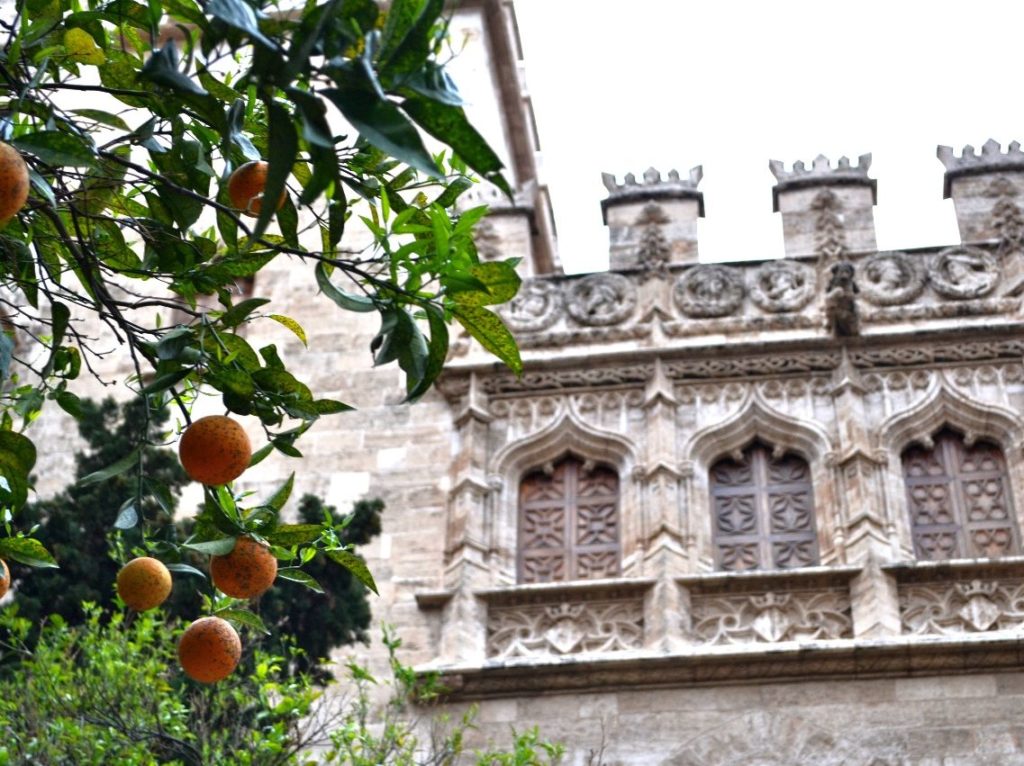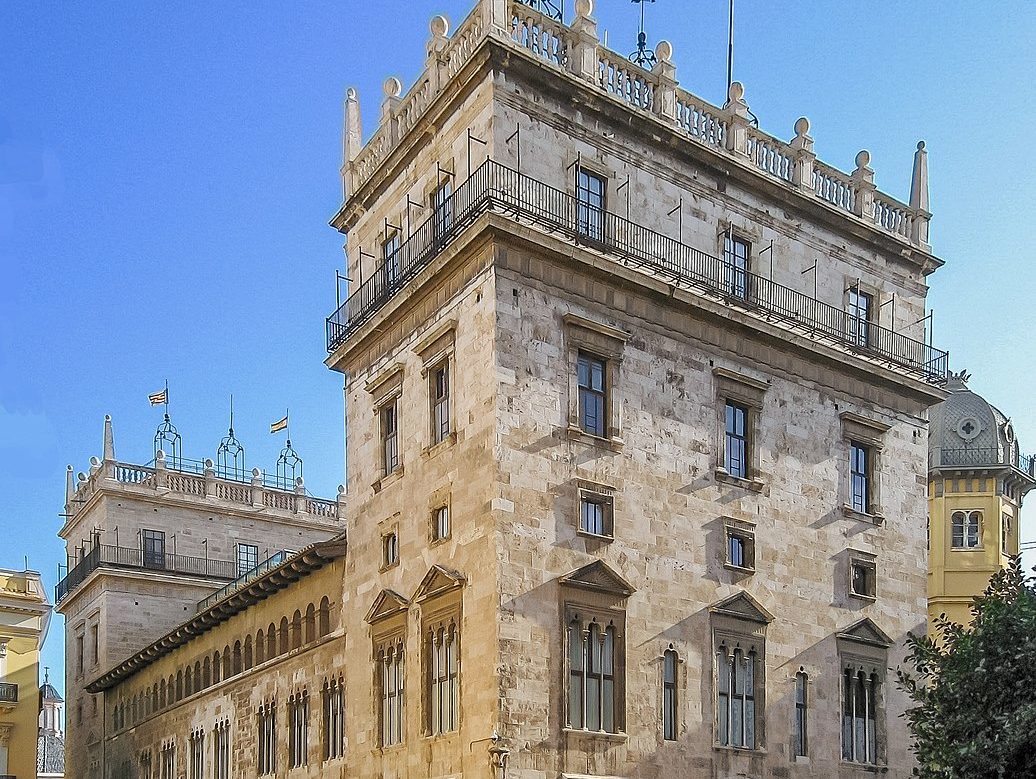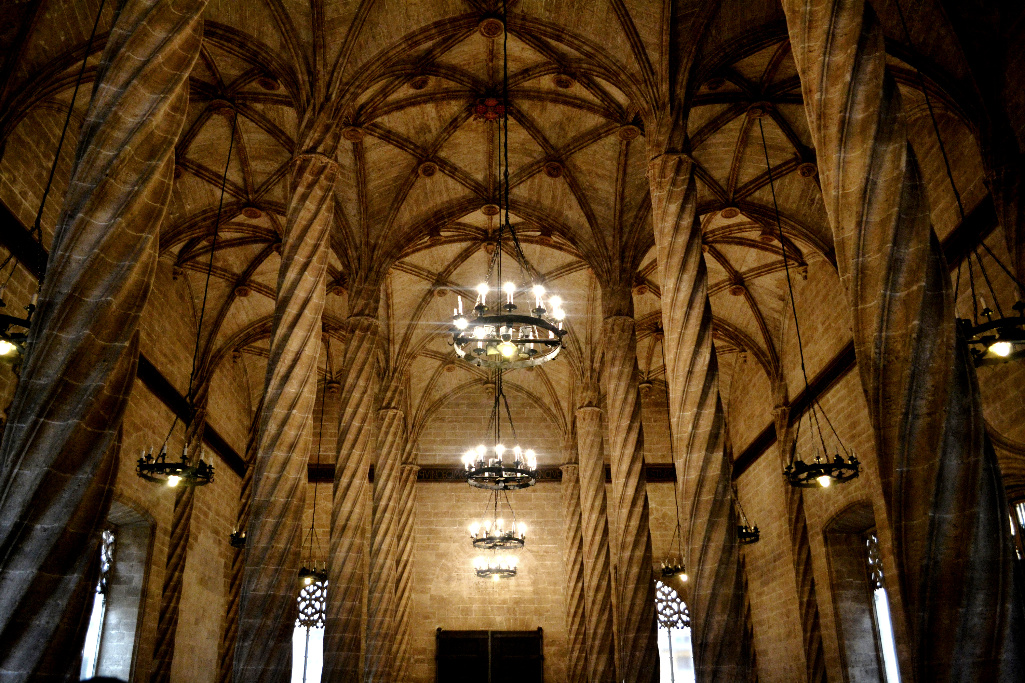Architecture of Valencia, Spain
Located on the southeastern coast of Spain, Valencia is the country’s third-largest city and home to over 800,000 people. For 2000 years, the city has had various rulers including the Romans, the Moors, and the Kingdom of Aragon. The architecture of Valencia is incredibly diverse, with examples from different time periods including the Gothic Age, the Baroque Age, and the modern works of Santiago Calatrava.
Map of Valencia
1. Old town of Valencia 2. The Riverbed of the Turia River 3. Eixample Neighborhoods 4. City of Arts and Sciences 5. El Cabanyal Neighborhood 6. Beaches of Valencia
Table of Contents
History of Valencia
Gothic Architecture in Valencia
Founded by the Roman Empire in 138 BCE, the city was originally known as Valentia. But since Valencia was small when compared to other cities in the region, there aren’t a lot of impressive Roman Ruins like you see elsewhere in Spain. After the fall of the Roman Empire Valencia later prospered during the period of Moorish rule in the Iberian Peninsula. However, because Valencia was later retaken by the Aragonese King James I in 1238 CE, few traces of original Moorish Architecture remain.
It was not until the mid-13th century that some of Valencia’s most impressive architectural sites came to be. The Spanish Kingdom of Aragon built many important structures within the city, including a Gothic Cathedral and a new fortified wall. The wall was one of the strongest in Europe, with 12 different gates, two of which still remain. The Gothic Age was a time of growth and prosperity for the city, and that’s very apparent when examining the city’s various Gothic Buildings.
Map of Valencia highlighting the most notable works of Gothic and Medieval Architecture within the city.
The original defensive walls of the city are shown with a dashed line, and the original path of the Turia River is shown in blue.
1. Silk Exchange (Llotja de la Seda)

The Llotja de la Seda or the “Silk Exchange” is one of the finest examples of Gothic Architecture anywhere in Spain. Construction began in 1482 when Valencia was emerging as a key trading outpost for silk and other precious goods. The most impressive room within the building is the Sala de Contratacion or “Contract Hall” which is where merchants would meet and negotiate on prices and quantities. The spiral columns elegantly twist and turn toward the precisely crafted vaulted roof overhead.
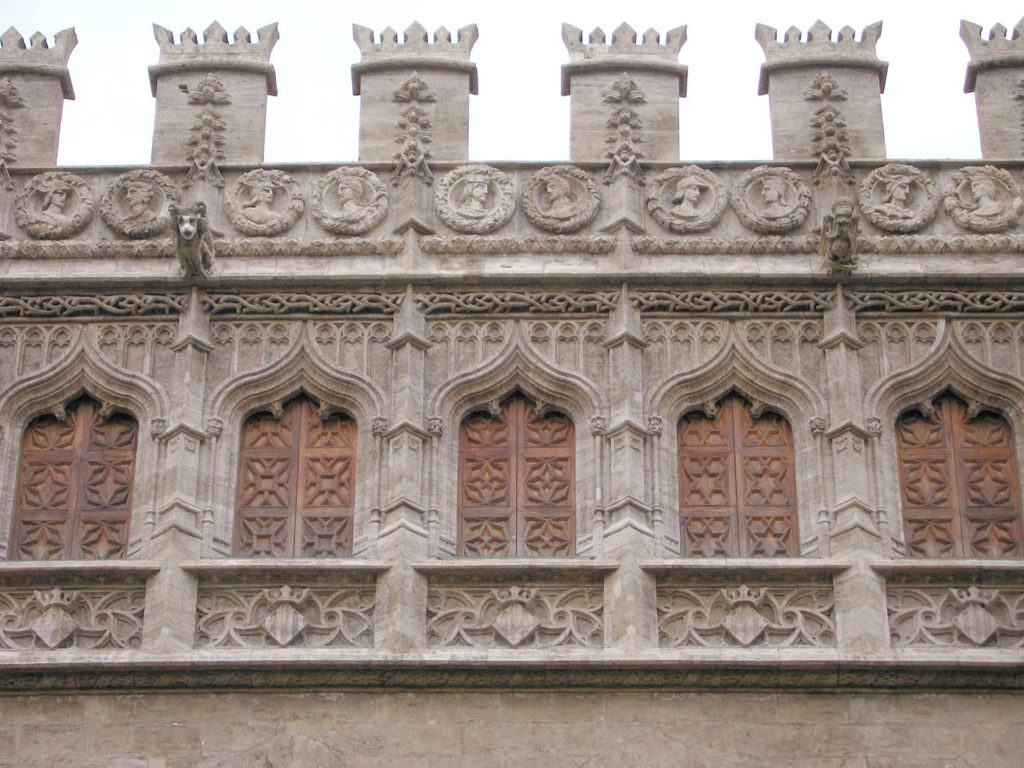
The front elevation of the Silk Exchange faces Plaça de Mercat, a bustling square filled with some of Valencia’s other major sites, such as the Central Market. From the exterior, you can see some of the most iconic features in Gothic Architecture such as the pointed arches, and the gargoyle downspouts that jut out from the facade. The particular point on these arches is slightly different than many others from the Gothic age, making this variety of arch unique to Valencia. Today, the Silk Exchange is Valencia’s only UNESCO World Heritage Site.
2. Valencia Cathedral

Valencia Cathedral is the largest church in the city. Although work on the cathedral started in the 13th century, the building wasn’t completed until late in the 15th century. Many different architectural styles can be found throughout the church, making it one of the most eclectic cathedrals in Europe. The church is mostly Gothic, but it also contains elements from Renaissance and Baroque Architecture. When the Moors controlled the city from 714-1238 CE, they built a large mosque where the cathedral sits today. When the Christian forces retook the city in 1238, they tore down the mosque and began work on the building we see today.
3. Torres de Serranos
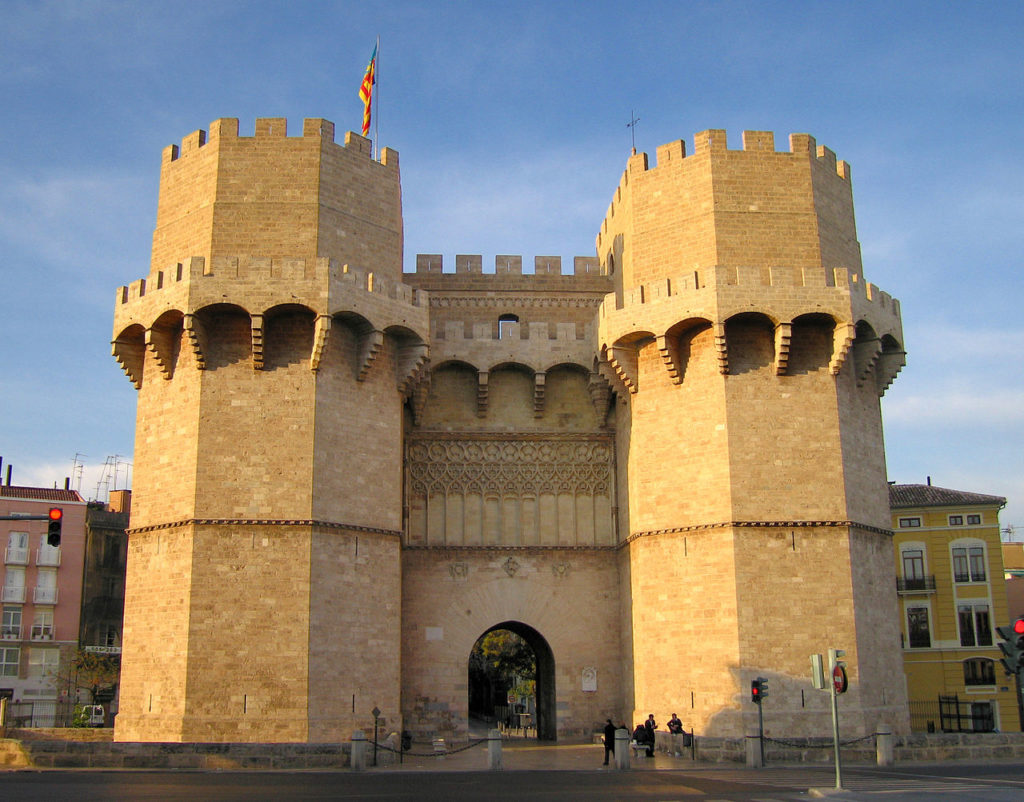
Originally the medieval wall of Valencia contained 12 different gates that pointed in different directions. The Torres de Serranos connected the city with the banks of the Turia River, which made it a key access point within the fortifications. The gate was built between 1392 and 1398 and was an important part of the formidable wall that once encircled all of Valencia’s Old Town. In 1865, when city officials made the decision to tear down the walls, the Torres de Serranos was one of the few portions to remain.
4. Church of San Juan de l’Hospital

Construction on the Church of Sant Joan de l’Hospital began in 1238, making it one of the oldest churches in Valencia. The interior is almost completely Gothic, with very few works of art or decorations from later styles. The heavy, dark stone walls and the simple geometry show that this church was built immediately after the Romanesque Age, when certain typical characteristics of Gothic Architecture were still being developed.
5. Torres de Quart
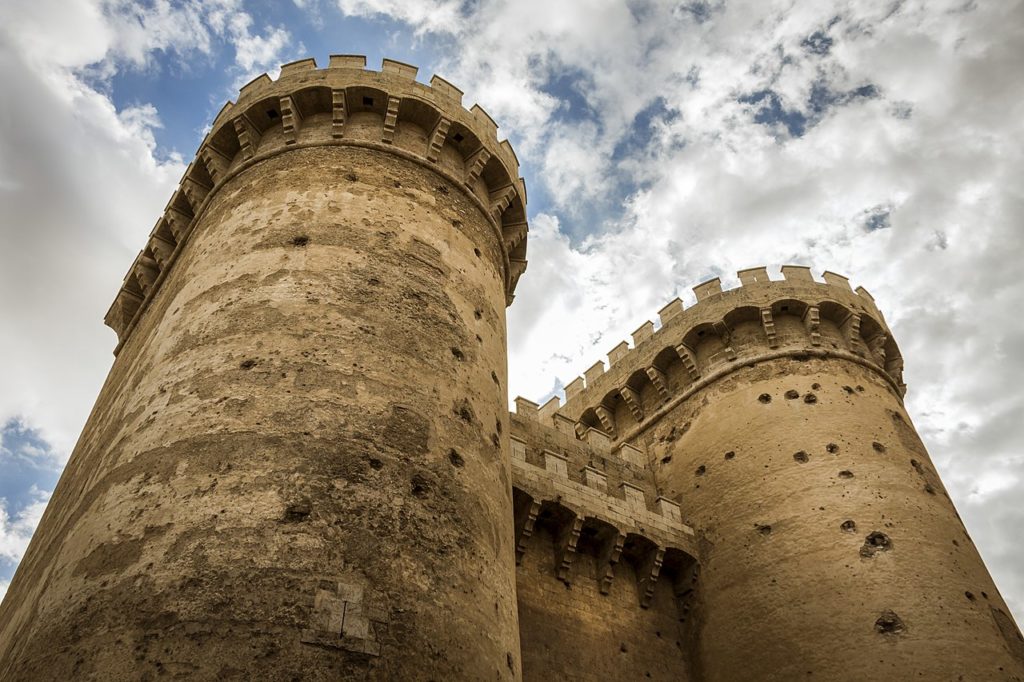
The second major surviving portion of the defensive wall of Valencia is the Torres de Quart. Although not as well preserved as the Torres de Serranos, this gate still shows the scale of the fortifications. The walls of Valencia were a unique Gothic Fortification, which utilized pointed arches and other key features from the Gothic Style. Although controversial, the demolition of the medieval wall was an important step in forming the modern city of Valencia that we know today,
6. Convento de Sant Doménec
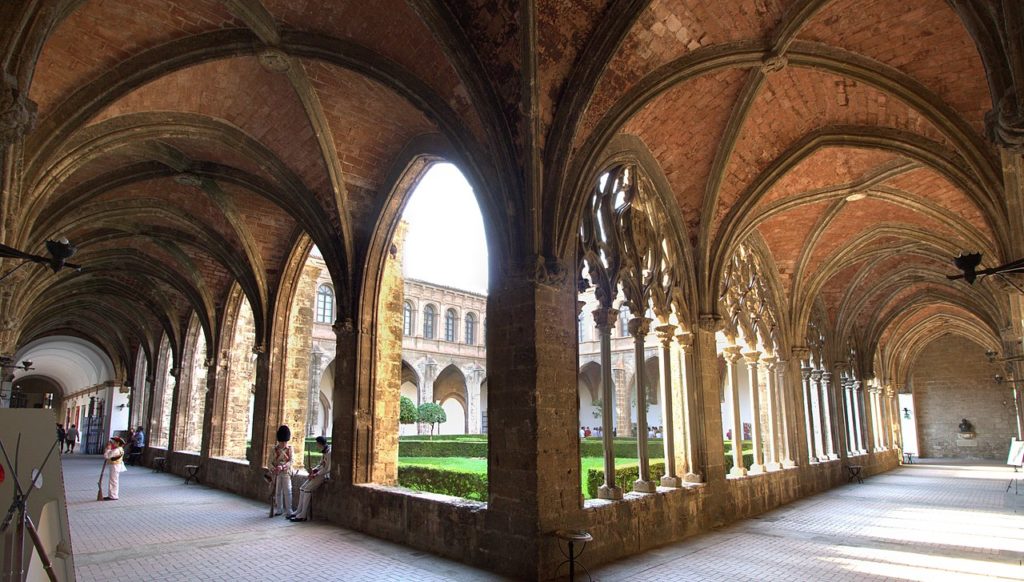
Construction on the Convento de Saint Doménec originally began in 1239 but continued for several centuries. It was founded by James I of Aragon, immediately after he reconquered Valencia from the Moors. Although the exterior of the convent dates from the Baroque and Neoclassical ages, the interior of the convent contains one of the finest Gothic Cloisters in all of Spain. The towering pointed arches are filled with intricate carvings that were painstakingly cut by medieval craftsmen.
7. Plaza de la Reina
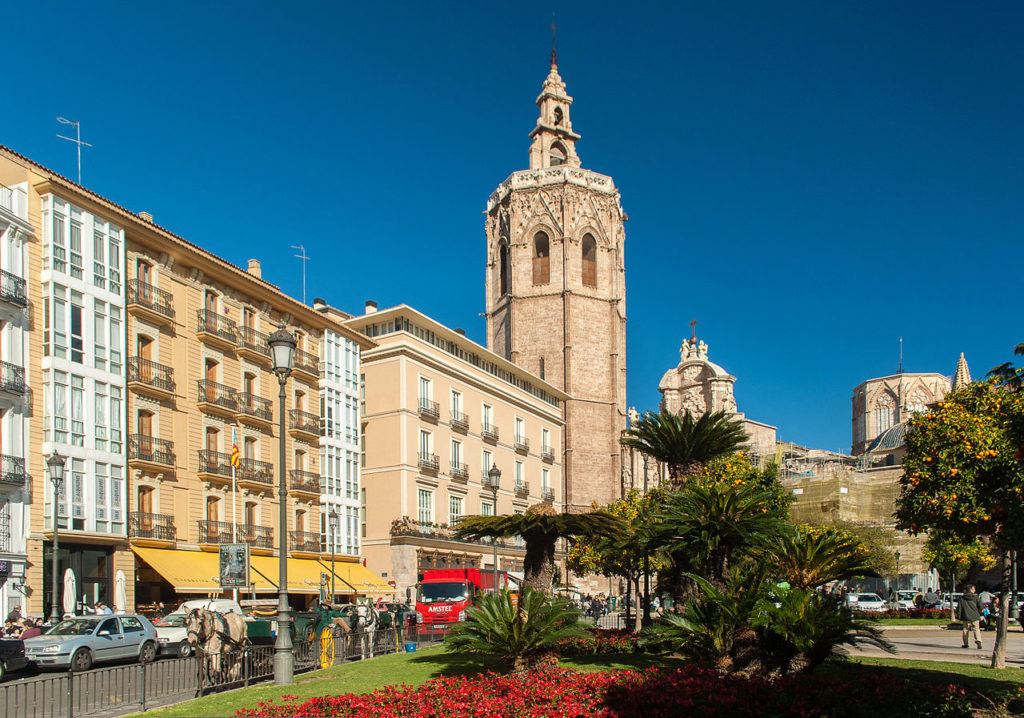
Although smaller than many other Plazas in Spain, the Plaza de la Reina is one of the most important spaces in the city. Although most of the buildings fronting the square are contemporary, the space has been an open area since the early Middle Ages. The main facade of Valencia Cathedral faces the plaza and the gothic exterior of the church and the octagonal bell tower are the most dominant features within the modern-day square.
Renaissance and Baroque Architecture in Valencia
During the late Middle Ages, Valencia entered a golden age and was one of the most important trading centers in all of Spain. Thanks in large part to the city’s trade in silk, Valencian merchants brought vast amounts of wealth into the city. All of this trade inevitably brought in money, which spread to the church through local patronage and to the rulers of the city through taxes. This is why Valencia is also home to many examples of Renaissance and Baroque architecture built during the city’s cultural high point.
Map of Valencia highlighting the most notable works of Renaissance and Baroque Architecture within the city.
The original defensive walls of the city are shown with a dashed line, and the original path of the Turia River is shown in blue.
1. Basílica de la Mare de Déu dels Desemparats

The Basílica de la Mare de Déu dels Desemparats was built only a few feet away from the Cathedral of Valencia, and it even has a bridge connecting the two buildings. It is the oldest purpose-built baroque church in the city of Valencia. Since the basilica doesn’t sit on the foundation of an existing church, all of the architecture is consistently baroque. The interior contains a large elliptical room with a detailed ceiling fresco. The ornate and intricate decorations that enclose the interior are standard features of the Baroque Style.
2. “Door of the Irons” Facade of Valencia Cathedral
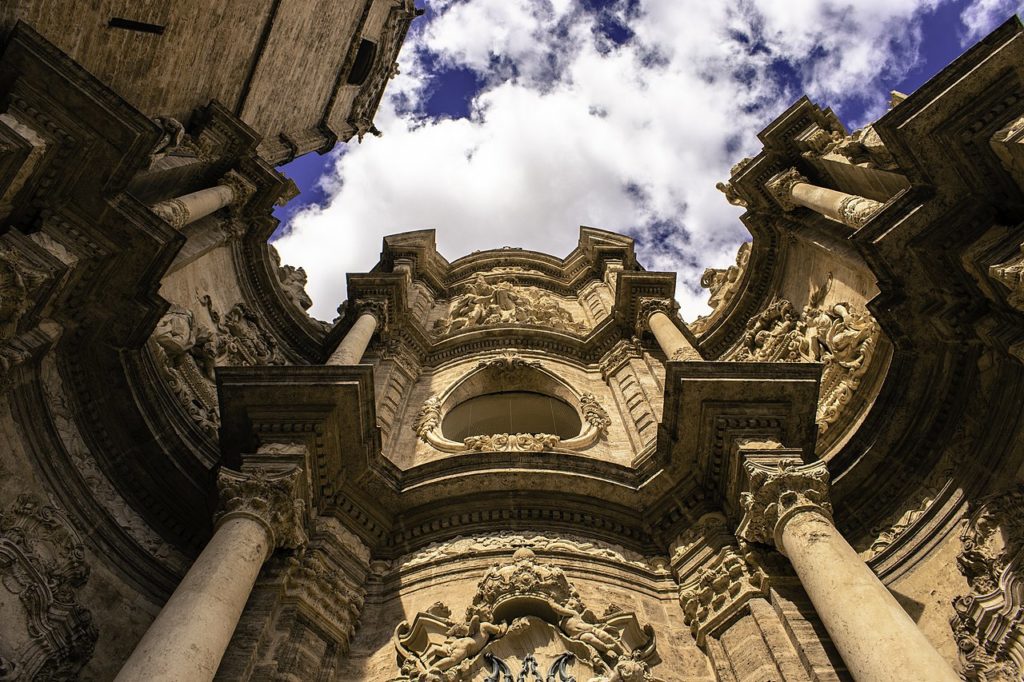
Valencia Cathedral was modified constantly over hundreds of years. Despite the church’s many Gothic Elements, its most notable feature might be the Baroque Facade known as the “Door of the Lions.” Dating to the early 1700s, the facade is perfectly symmetrical and it is richly detailed with stone carvings. The concave design of the entrance and the elliptical window are both textbook elements from the Baroque Style of Architecture.
3. Church of San Nicolás

From the outside, the Church of San Nicolás looks like a standard Gothic building. It was originally founded in the 13th century and was built in a style similar to Valencia’s many other churches from this time. However, in the 1690s, a massive interior renovation transformed the church into the Baroque wonder that it is today. The exuberant detailing and frescoes, paired with the gold and blue color pallet, create a space that shows off the rich extravagance of the Baroque Age.
4. Plaza de la Virgen
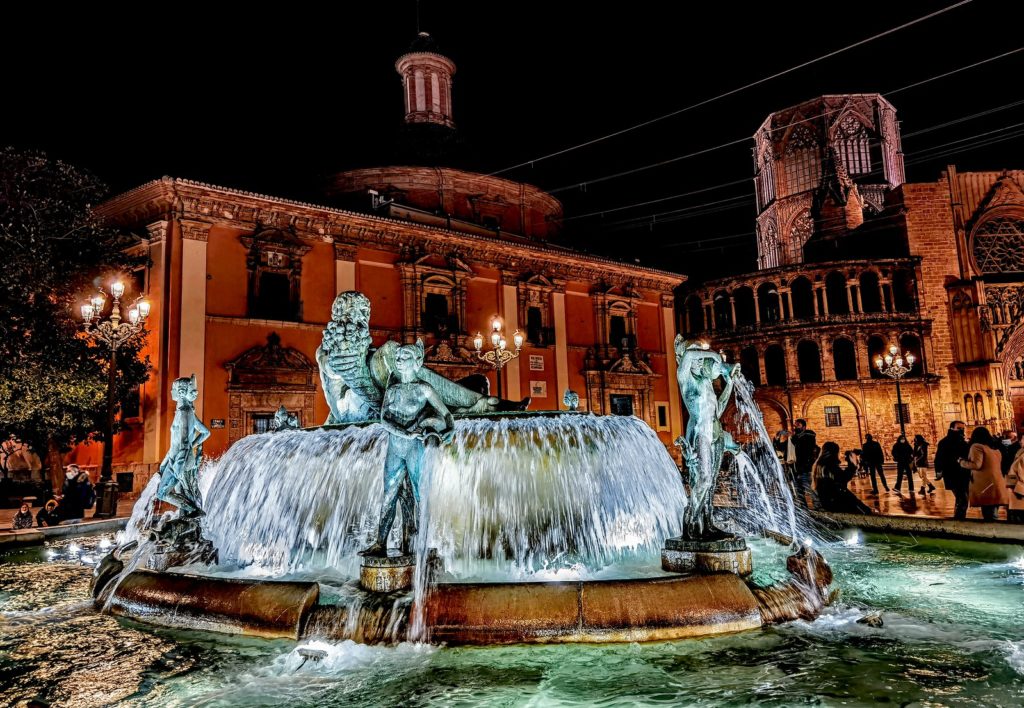
Like many other Spanish cities, Valencia contains multiple large plazas, which are public gathering places within otherwise densely packed cities. One of Valencia’s most magnificent public squares is Plaza De La Virgen. The central element of the Plaza de la Virgen is the Turia Fountain, a large decorative water feature complete with several bronze-cast statues. The square is one of the liveliest in all of Valencia since it fronts the exterior of Valencia Cathedral and the Basilica de la Mare de Déu dels Desemparats. Several local restaurants have outdoor seating within the square, making Plaza de la Virgen one of the best places in the city to enjoy an outdoor coffee or meal.
5. Sant Joan del Mercat church

During the 15th century, Valencia entered a Golden Age. Merchants and traders dealt in precious goods such as silk, and the city grew very wealthy from the abundance of commerce. During this time, Valencia built some of its most remarkable works of architecture, like the Sant Joan del Mercat church. This church is built in a lavish Baroque style. The east facade is one of the highlights of the building, and the central clock tower is ornately decorated with stonework that is emblematic of Baroque Architecture.
6. Palau de la Generalitat Valenciana
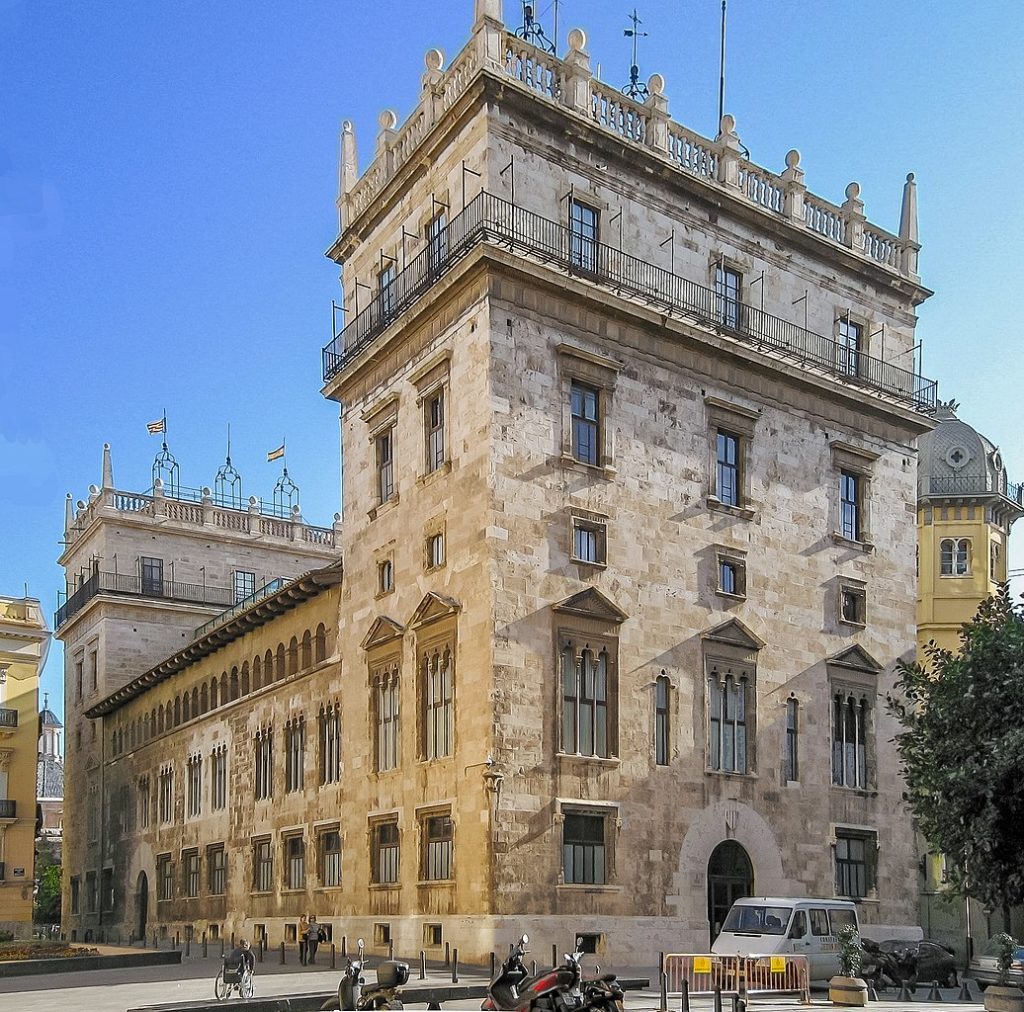
The Generalitat Valenciana is the name of the local government of the city, and its main administrative building is the Palau de la Generalitat Valenciana. Built with Renaissance Architecture, the building was originally a hospital located only a few steps away from the Cathedral of Valencia. Construction began in 1409, and over time many additions including a small chapel, were added. Today, the Palau de la Generalitat Valenciana overlooks Plaça de la Verge, a small square lined with shops and cafes.
Like Architecture of Cities? Sign up for our mailing list to get updates on our latest articles and other information related to Architectural History.
7. Museu de Belles Arts de València

Founded in 1913 the Museu de Belles Arts de València is an art gallery located just over the Turia River from the Old Town of Valencia. The museum contains art made from the 1300s to the 1600s and includes works by El Greco, Diego Velázquez, and several engravings by Giovan Battista Piranesi. The building that houses the art gallery, was built from the 17th-18th century. Originally a lavish Renaissance-style palace, other additions to the building were also built in the Baroque style.
8. Palace of the Marqués de Dos Aguas
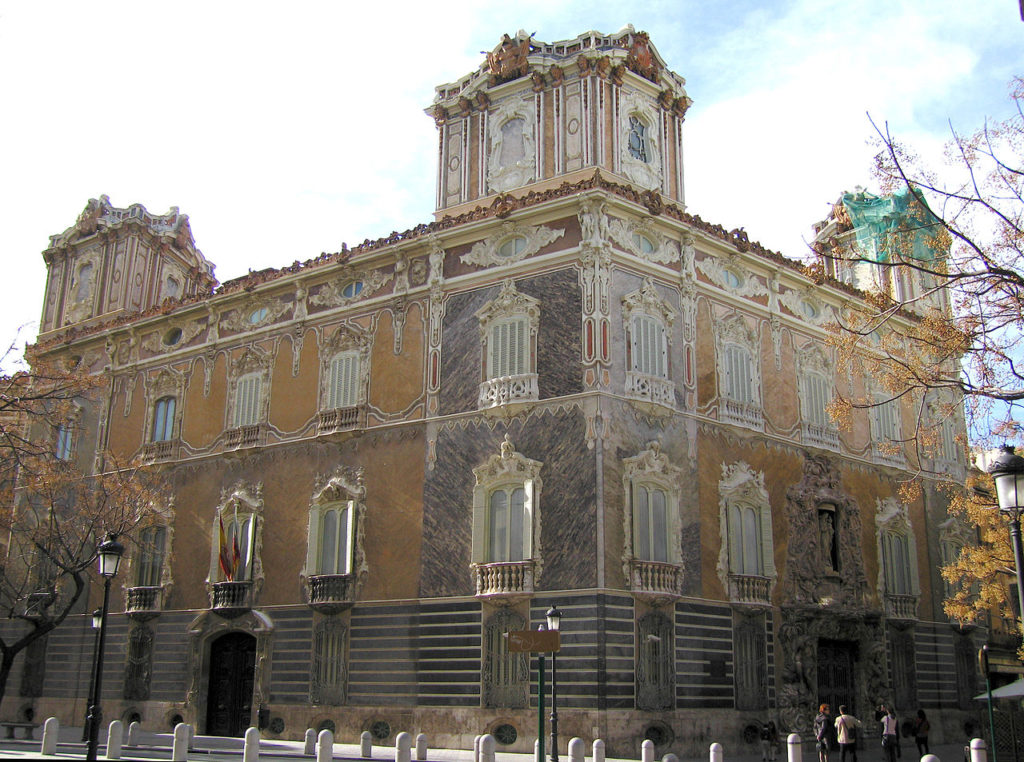
Dating to a time just after the Baroque Age, the Palace of the Marqués de Dos Aguas was built in the Rococo Style, a much more fanciful and elaborate form of architecture. The windows and the balconies as well as the roofline, are all decorated with lavish images of fruits, people, and plants. Today, the Palace is owned by the city, and it contains the González Martí National Museum of Ceramics and Decorative Arts.
9. Pont dels Serrans and Pont de la Mar

Several medieval bridges connected the Old Town of Valencia to the other side of the Turia River. These bridges date from different eras, and most were originally constructed of wood. Over time as the wooden structures were damaged by flooding, the city decided to rebuild them out of stone. Two of the best-preserved bridges within the city are the Pont dels Serrans and the Pont de la Mar. Pont Dels Serrans dates to the 16th century and brought pedestrians to the Torres de Serranos. Thanks to the rerouting of the Turia River, Valencia is one of the few places on earth where you can walk underneath these historic bridges.
10. Real Colegio Seminario del Corpus Christi
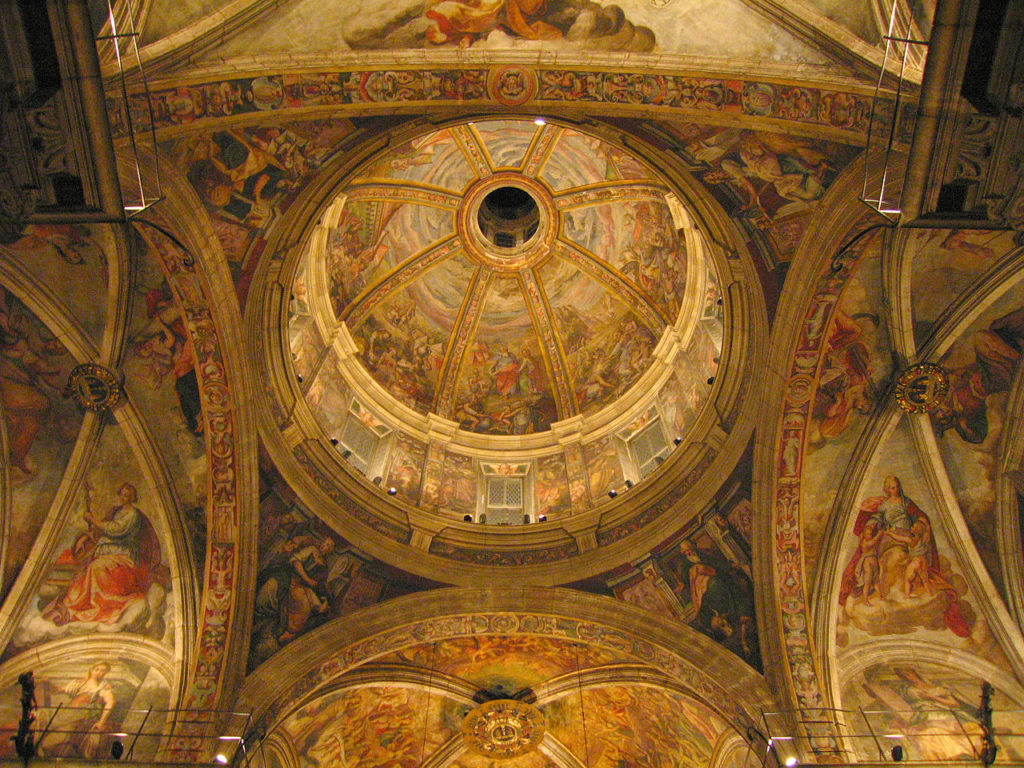
The Real Colegio Seminario del Corpus Christi was founded in 1583 and serves as a seminary school for the Catholic Church. The main building contains a Renaissance Style cloister that surrounds an open courtyard. On the east side of the building stands the Iglesia del Patriarca, a church with a richly decorated Renaissance interior. Today, the Real Colegio Seminario del Corpus Christi draws many visitors thanks to the many works of art by Caravaggio and El Greco that are on display.
19th and Early 20th Century Architecture in Valencia
Like much of the rest of Spain, Valencia heavily modernized and expanded during the Industrial Revolution. New neighborhoods, built in a similar style to the Eixample neighborhood of Barcelona were constructed. Valencia invested in a new city hall and new transportation infrastructure, and the city tore down the majority of its defensive walls to prevent overcrowding. Several covered markets in new architectural styles like Art Nouveau were also built in the early 19th century.
Map of Valencia highlighting various buildings constructed during the late 1800s to early 1900s.
The original path of the Turia River is shown in blue.
1. Mercat de Colón
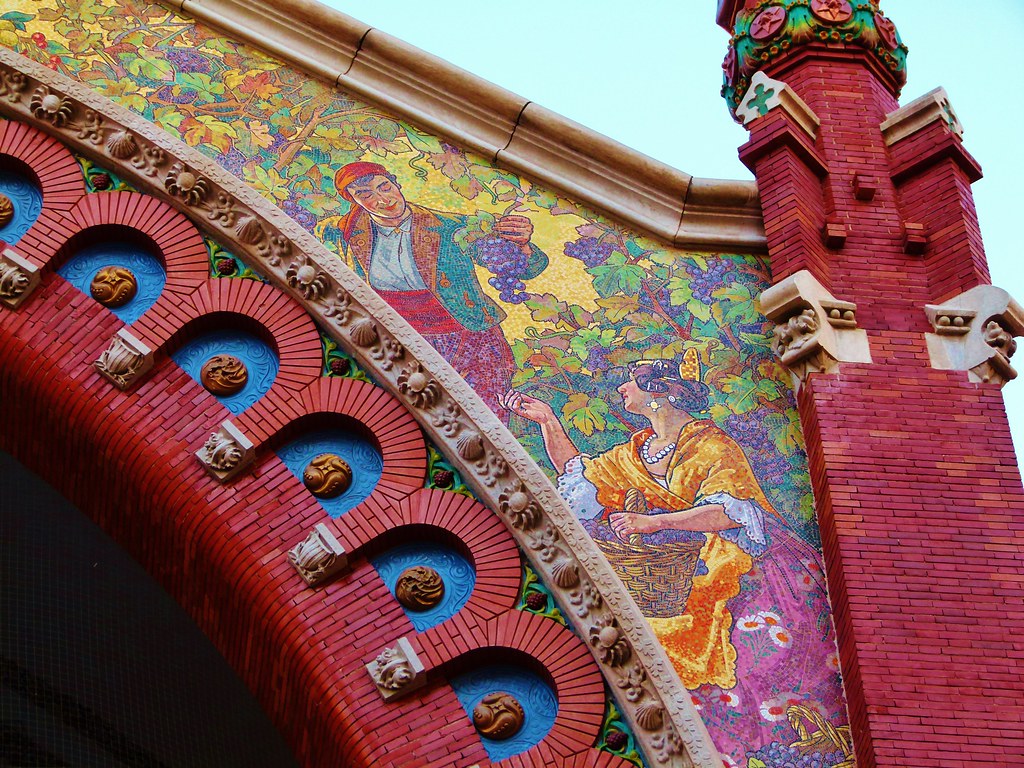
The Mercat de Colón might be one of the most beautifully designed market halls in all of Europe. The original building dates from 1914-1916 and is an incredible example of Art Nouveau Architecture. The building uses a combination of a masonry facade and a canopy made from a metal structural skeleton. The colorful artwork on the front facade is a feature unique to Art Nouveau buildings from this time period.

The entire market was also recently renovated, and a modern addition with escalators, glass handrails, and a reflecting pool was added. Although it used to be full of market stalls selling fresh produce and baked goods, today the main hall of the Mercat de Colón is filled with different restaurants that sell coffee and local cuisine. Thanks to the modern renovation, the market has once again become an important part of the Eixample neighborhood of Valencia.
2. Valencia City Hall
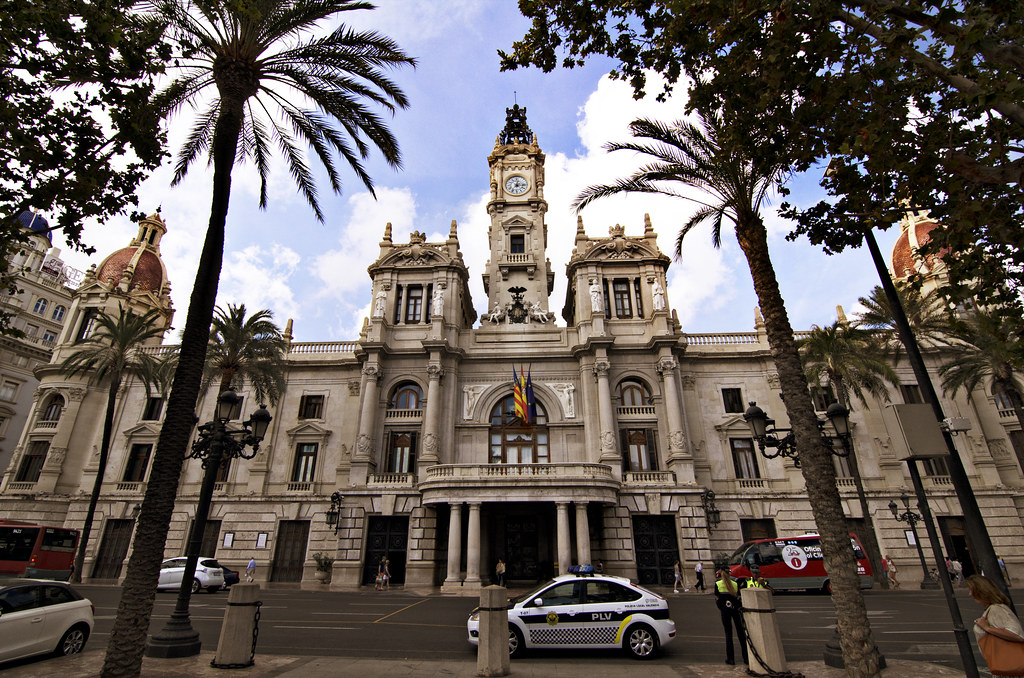
In the early 1900s, Valencia began construction on a new city hall, which has been the home of the city council chambers since 1934. The symmetrical facade that faces Plaça de l’Ajuntament is renowned for its blend of different architectural styles, including Neo-Renaissance and Neo-Baroque. Valencia City Hall has become a symbol for the city’s local government and is one of the most important buildings built in the early 20th century within Valencia.
3. Plaça de l’Ajuntament
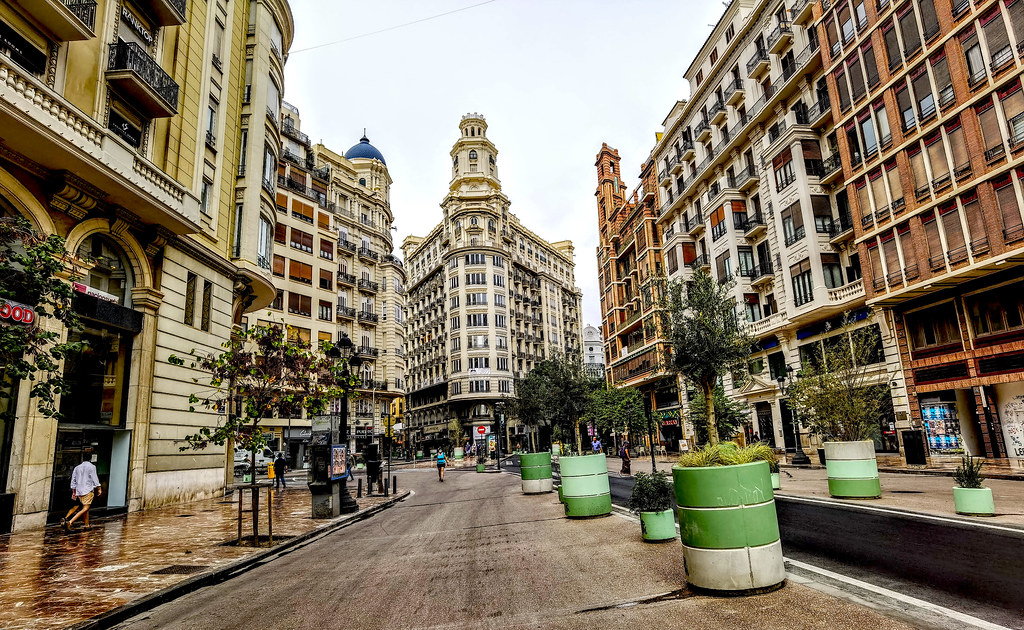
Just outside the main entrance to the Valencian City Hall is the Plaça de l’Ajuntament or “Plaza of the City Council.” Its one of Valencia’s largest plazas, and it is located at the southern edge of the Old Town. The middle of the square is lined with different deciduous and palm trees, and there is a large fountain within the main traffic circle. All of the buildings in the square date from the late 19th to early 20th centuries and are a blend of residential, commercial, and retail spaces.
4. Estació del Nord

During a time when railroads were being built connecting all of Spain’s major cities, Valencia began construction of the Estació del Nord, the city’s most central station. The rail lines connect Valencia with other cities like Madrid, Seville, Tarragona, and Barcelona. The ticketing room of the station showcases fantastic ceramic tilework. During the late 19th century, Valencia was one of Europe’s largest exporters of ceramic tiles, which is why many of the columns and ceilings within the station are decorated with tile mosaics.
5. Banco de Valencia Building

The 1920s was a prosperous time for the city of Valencia, and the Banco de Valencia building was built at the peak of this booming age. The distinct wedge-shaped design of the bank is reminiscent of the Flatiron Building in New York City. Today, Banco de Valencia is still a popular bank in Spain, with hundreds of different offices and branches,
6. Valencia Bullring
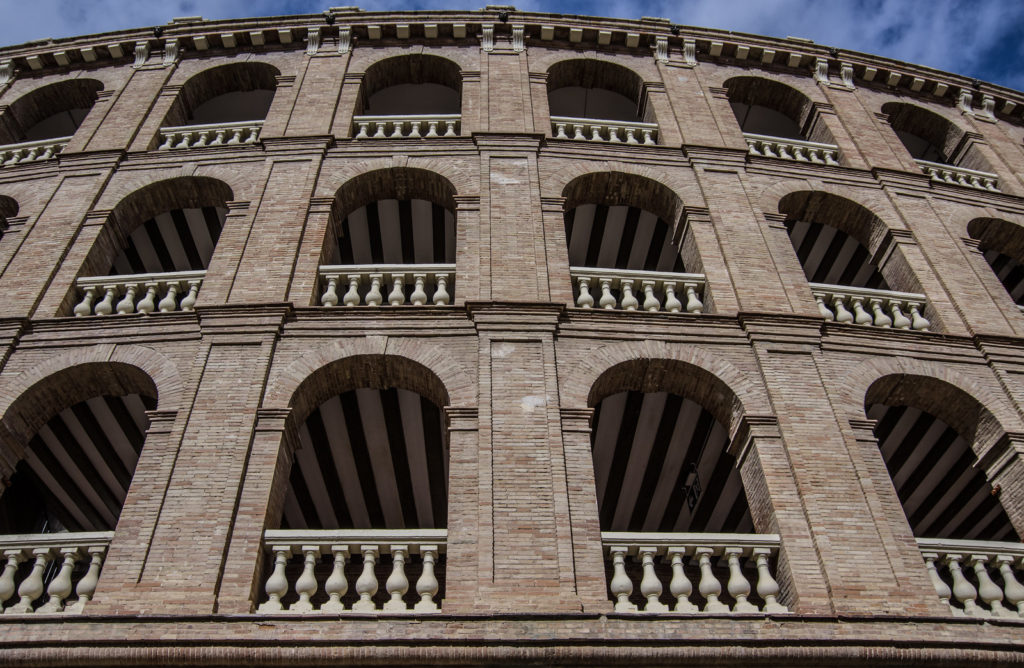
Located right next to Estació del Nord, the Bullring of Valencia is a local landmark and popular gathering spot since the ring is still used for bullfighting to this day. Its design is the same as many other Spanish Bullrings, with a circular arena enclosed by a ring of seating. The design greatly resembles that of the Ancient Roman Amphitheater. Many of these ancient Roman stadiums were built within Spain, so it’s easy to see the connection with the country’s ancient origins.
7. Mercado Central
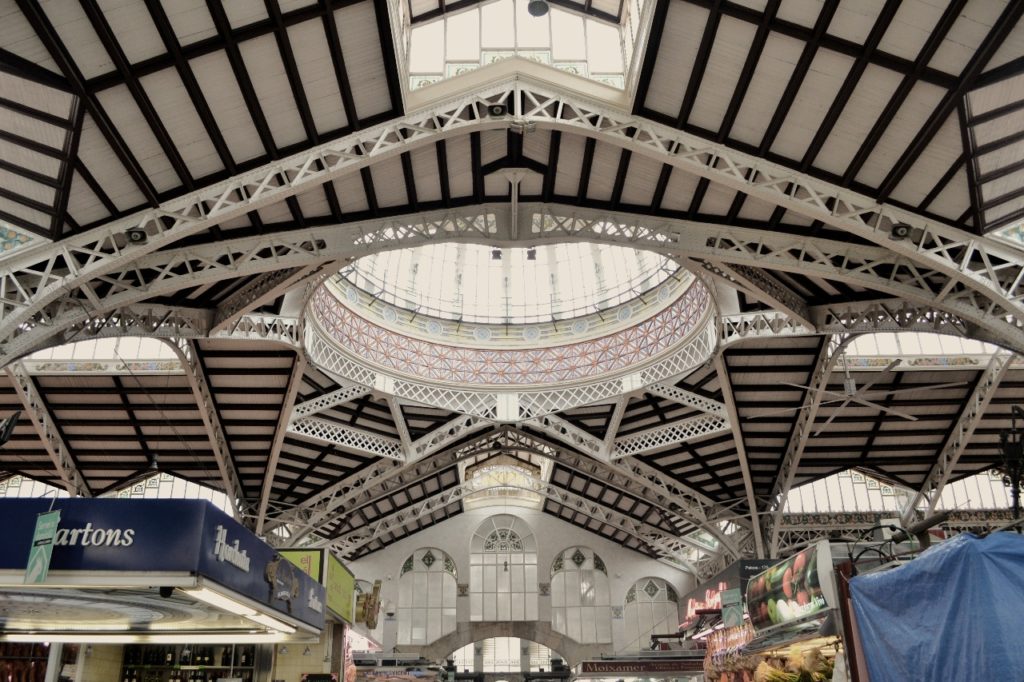
Construction on the Mercado Central began in 1914, at a time when Valencia was growing into one of the most important economic centers in Spain. Originally, the space hosted an open-air market that was popular in the late 1800s. The city hosted a design competition to create a large canopy to cover the entire market. This practice was becoming very popular in Spain at the time, and other major cities such as Madrid and Barcelona also constructed large enclosures for local vendors to gather within.
8. Porta de la Mar
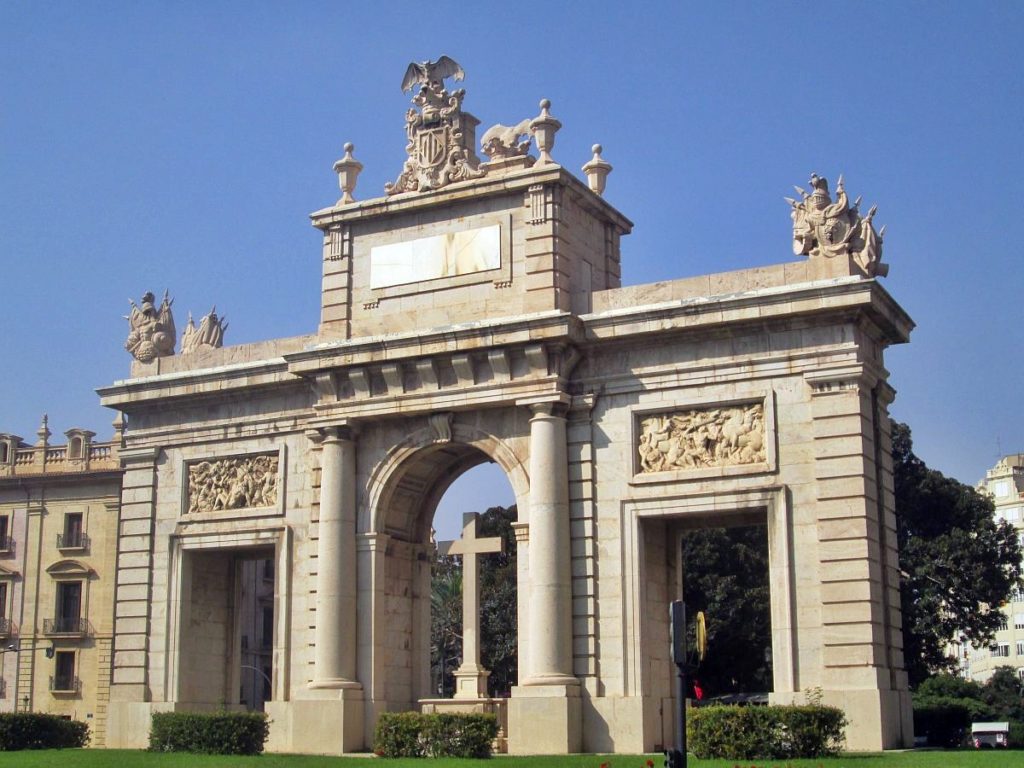
The Porta de la Mar is a Triumphal Arch at the center of a traffic rotary within Plaça de la Porta de la Mar. The monument coincides with the location of one of the original 12 gates of the city wall of Valencia. The gate, which originally connected the city with the road to the Mediterranean Sea, was demolished along with the rest of the medieval walls. In the late 19th century, the Porta de la Mar was constructed and the design resembles an Ancient Roman Triumphal Arch. At this time it was common for governments to erect monuments in a Neoclassical style as a way to allude to the Ancient Romans who influenced so much of modern European Culture.
Modern Architecture in Valencia in 5 Districts
Today, Valencia is known for its modern architecture, thanks in large part to Santiago Calatrava. Calatrava was born in Valencia and is the lead designer for the City of Arts and Sciences. This complex of buildings is one of the most iconic areas of modern Valencia. The city also invested millions in a project to reroute the Turia River after a severe flooding event damaged much of the city in 1957. Today, the former riverbed of the Turia has been converted into a park that winds through the center of modern Valencia. The city’s beaches have also been a huge draw for tourists and locals, which has helped make Valencia one of the most visited cities in all of Spain.
Map of Valencia showing five of the city’s most modern districts.
1. City of Arts and Sciences

The City of Arts and Sciences is sort of a city-within-a-city, it’s a group of buildings all built in an innovative modern style of architecture. The site was largely designed by Santiago Calatrava, a world-renowned architect and structural engineer born in Valencia in 1951. Original plans for the site started taking shape in 1991. One of the first buildings, the L’Hemisfèric, was completed in 1998, and it sits within a large reflecting pool. The Museu de les Ciències Príncipe Felipe was completed in 2000, and its innovative design creates a variety of exhibit spaces that teach people about science.

All of the buildings within the complex follow a theme based on innovation, science, technology, and education. That is why the City of Arts and Sciences contains L’Oceanogràfic, one of the world’s largest aquariums. L’Oceanogràfic is located at the southern edge of the complex and was completed in 1997. It is home to thousands of different species of sea life. Today the City of Arts and Sciences remains one of Valencia’s most popular attractions, bringing in thousands of visitors every year.
2. Turia Gardens

Valencia was founded on the banks of the Turia River because it provided fresh water and easy access into the interior of Spain, and it protected the city on one side from attack. Eventually, the river that was once necessary for the community in Valencia became more of a burden, thanks to seasonal flooding. At one point in 1957 severe flooding caused massive amounts of damage to the city’s buildings. During the 1960s, a large project began to relocate the flow of the Turia southward, thus bypassing the city center. Over time, the dried-up riverbed was turned into a park that contains gardens, sporting facilities, and even a concert hall.
3. Beaches and Boardwalk of Valencia
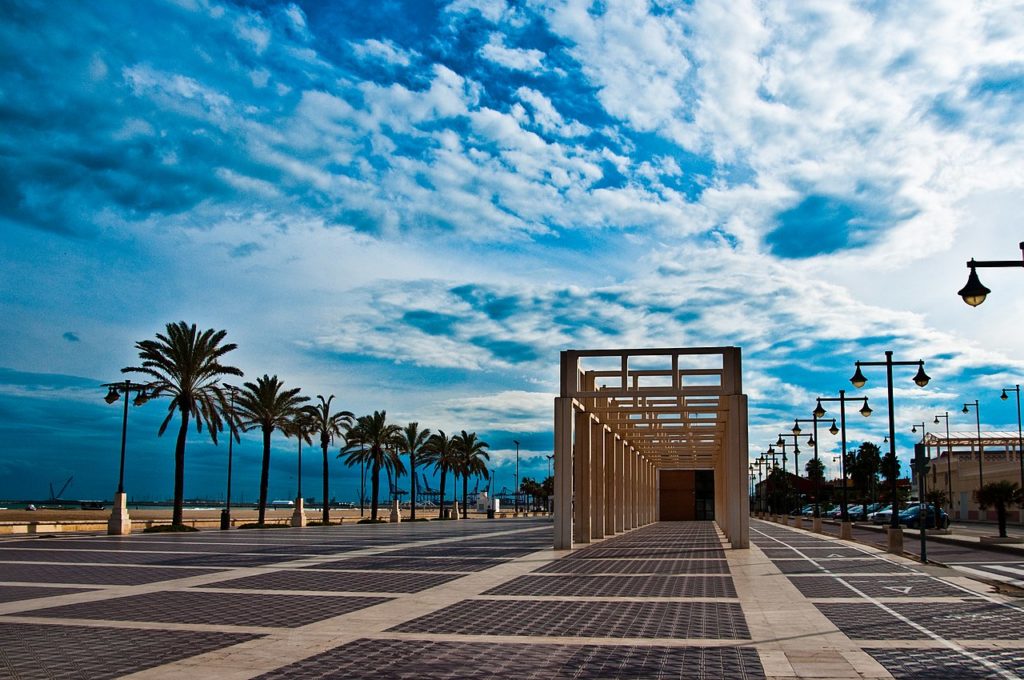
It’s not just the abundance of great architecture that draws people to Valencia; the city’s beaches are also some of the most popular in Spain. The closest beach to the city center is Playa de las Arenas, and the flat golden sands are great for lounging along the oceanfront. Running parallel to Valencia’s main beach is a 2 1/2 mile (4 km) long boardwalk lined with palm trees, benches, and other sitting areas. There are hotels, restaurants, and some residences along the path, so the area stays lively well into the evening.
4. El Cabanyal

The seaside neighborhood of El Cabanyal is one of Valencia’s largest residential areas. It was developed in a gridded system with streets perpendicular to the beach to take advantage of sea breezes. The neighborhood was built relatively recently when compared to Valencia’s old town, and the pre-planned streetscape is evidence of that. Today, El Cabanyal is one of Valencia’s best neighborhoods for sampling the city’s delicious cuisine. Pallela, a dish native to the region, is a popular seafood dish made with rice, shrimp, mussels, and saffron.
5. Penya-roja
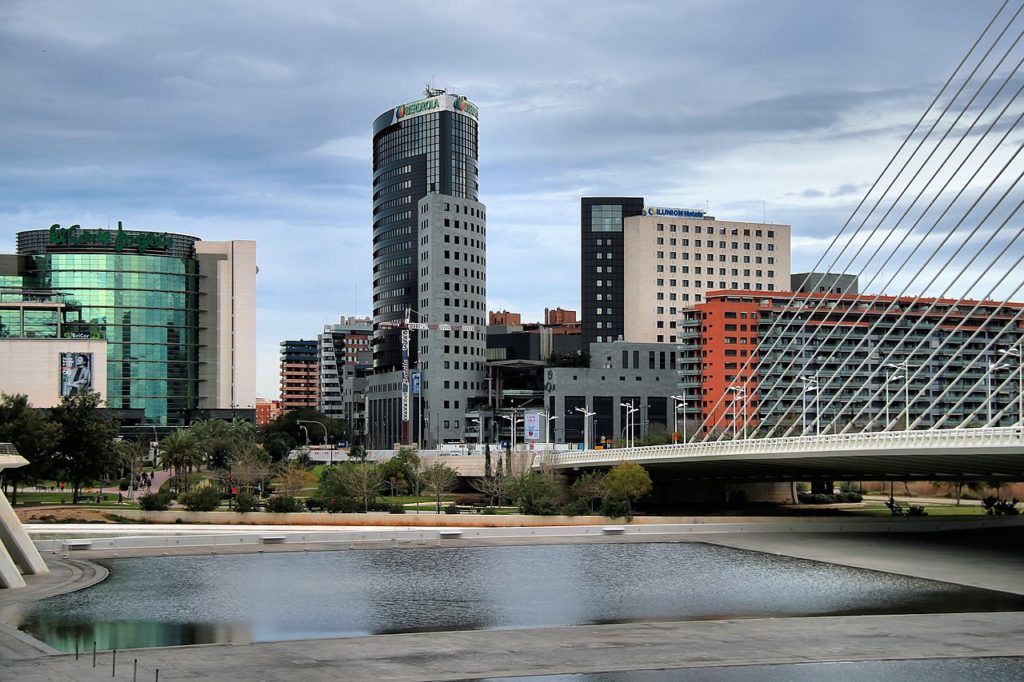
One of the most modern neighborhoods within Valencia’s city limits is Penya-roja, which is located along the Turia Gardens, right across from the City of Arts and Sciences. Although the architecture of Penya-roja is much more commercialized and not as artsy as what you find in the City of Arts and Sciences, many of the neighborhood’s buildings are great examples of contemporary design. The entire neighborhood is filled with mixed-use buildings, including offices, apartments, and retailers.
Neighborhoods and Attractions in Valencia

1. Old Town of Valencia
The medieval center of Valencia is known as the Old Town, and it was once enclosed by the city’s defensive walls. Most of Valencia’s greatest architecture is located in this portion of the city, including the Valencia Cathedral and the Llotja de la Seda.

2. The Riverbed of the Turia River
Valencia was built along the banks of the Turia River. However, after severe flooding in 1957, the city began a massive project to reroute the river away from the city center. Today, the former riverbed serves as a massive park and green space is thoroughly enjoyed by the local population.

3. Extramurs and Eixample neighborhoods
During the 1800s and the early 1900s Valencia was rapidly expanding, thanks in large part to the industrial revolution. City planners designed a grid system with long straight boulevards – a similar concept as the Eixample Neighborhood in Barcelona.

4. City of Arts and Sciences
The City of Arts and Sciences is a district within Valencia that is exclusively filled with modern architecture. The various buildings include a theater, a museum, and an aquarium. The majority of the site was deisgned by renowned architect and engineer Santiago Calatrava.
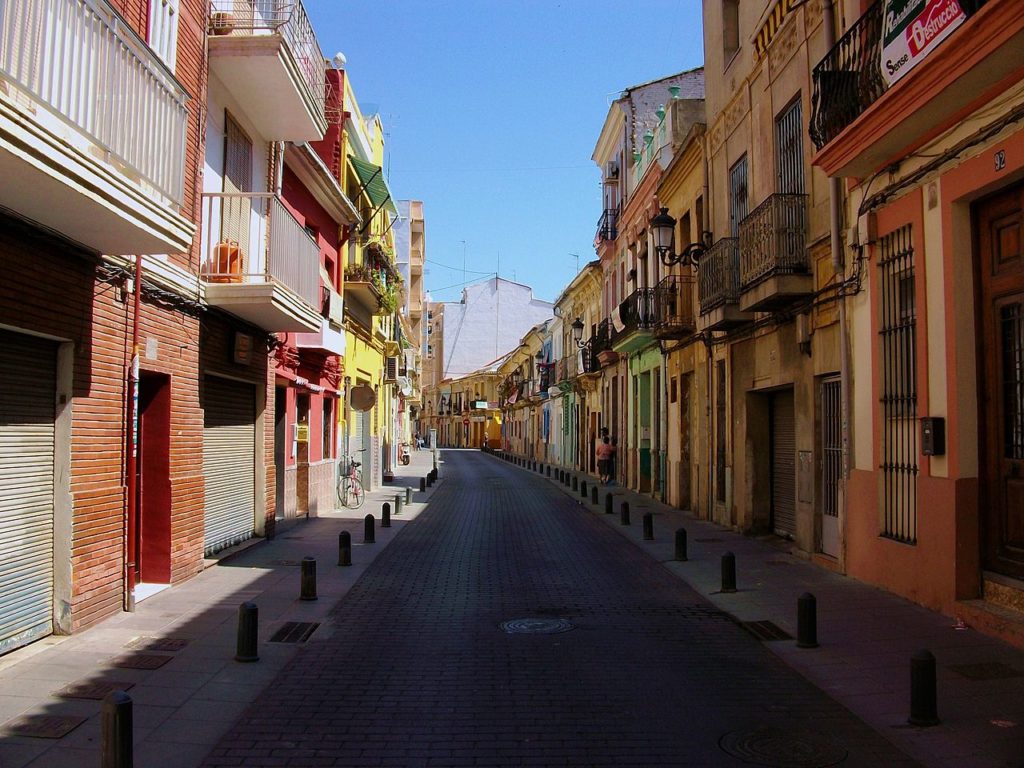
5. El Cabanyal neighborhood
El Cabanyal is one of the largest residential areas within Valencia. The area is known for its nightlife with many bars and restaurants. Its proximity to the beaches of Valencia makes El Cabanyal a popular spot for both locals and tourists alike.
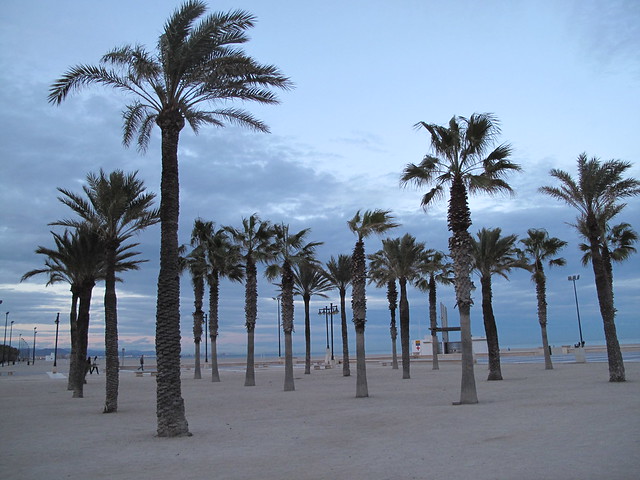
6. Beaches of Valencia
Valencia has some of the best urban beaches of any Spanish city. The beaches are so popular because they are very wide and sandy, but also thanks to Valencia’s warm climate. There is a modern boardwalk directly adjacent to the beach, which is a popular gathering spot.
Architecture of Valencia: In Review
Modern Valencia is a dynamic city, filled with many different contrasts. On one hand, it’s a timeless and historic city, filled with exquisite architecture from the Gothic, Renaissance, and Baroque Ages. On the other hand, Valencia is an innovative and modern city, filled with some of the greatest examples of contemporary architecture in Spain. It seems as if the city has something for every architecture lover. Although it’s not as visited as nearby Barcelona or Madrid, Valencia still should be considered one of the premier Spanish cities for architecture, and it’s certainly worth a stop while in Spain.
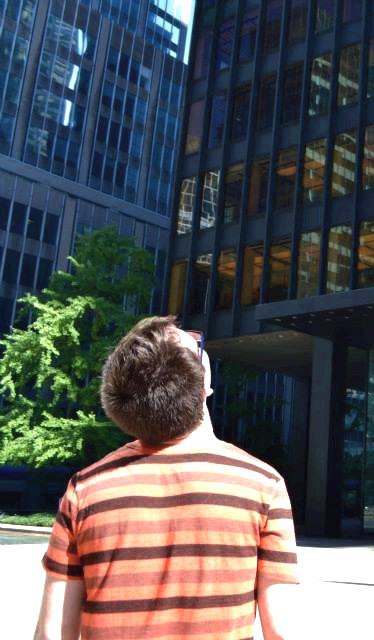
- About the Author
- Rob Carney, the founder and lead writer for Architecture of Cities has been studying the history of architecture for over 15 years.
- He is an avid traveler and photographer, and he is passionate about buildings and building history.
- Rob has a B.S. and a Master’s degree in Architecture and has worked as an architect and engineer in the Boston area for 10 years.
Like Architecture of Cities? Sign up for our mailing list to get updates on our latest articles and other information related to Architectural History.

